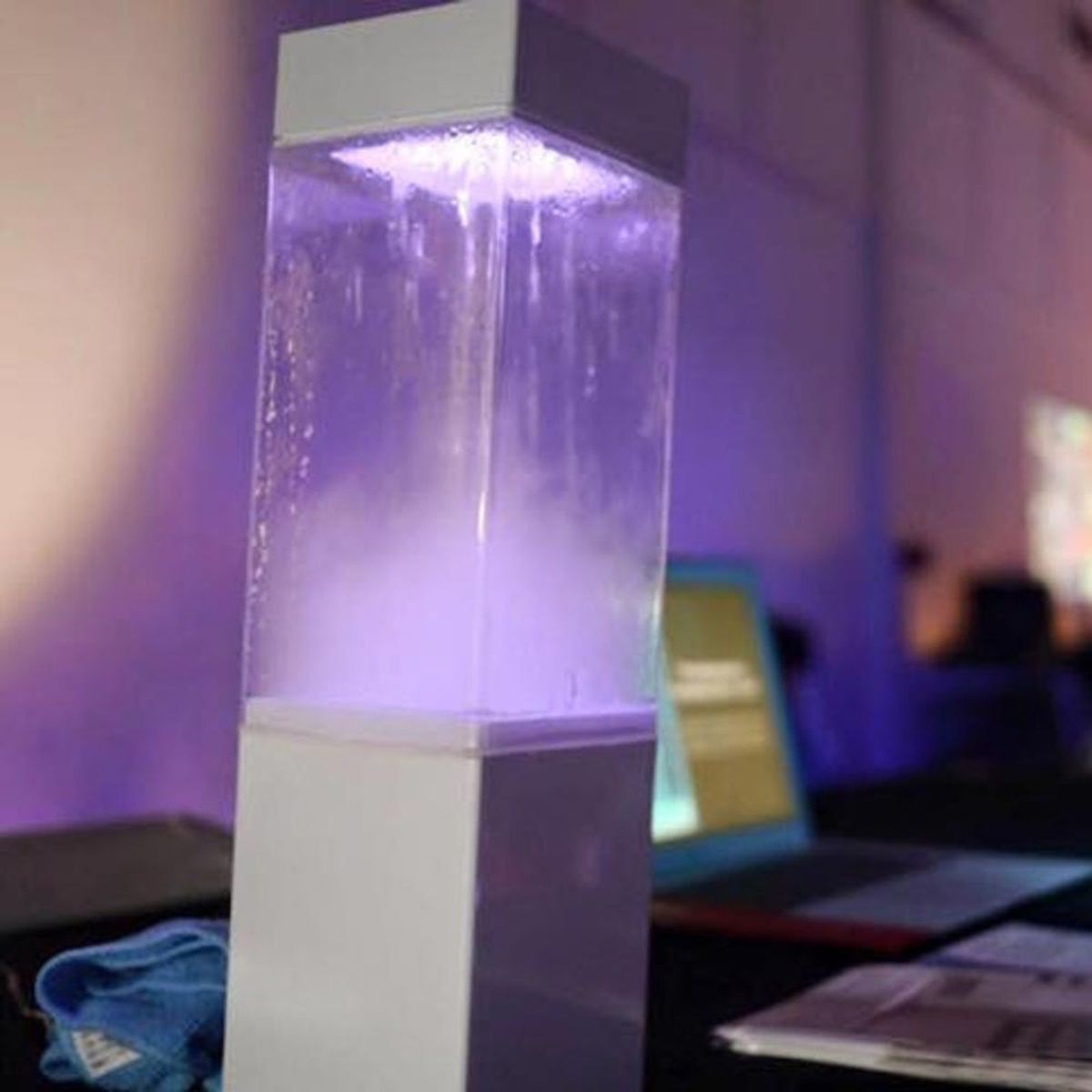Simulated weather in the palm of your hand!
Now You Can Simulate the Weather on Your Desk

There are many different ways to check the weather. You can watch the news, download an app for real time updates or just plain go outside to see for yourself. But what if there was a way to have the weather displayed inside your home, say in a box that fits on your table? How freaking cool would that be?
There are two settings for the Tempescope: tomorrow’s weather and world weather. Tomorrow’s weather shows you the next day’s forecast for a set location designated by the user, while world weather allows you to access the weather from places around the world. World weather can only be seen in real time, while tomorrow’s weather can be shown in real time or at an accelerated pace. If the forecast calls for rain and lightning, the Tempescope replicates a storm, complete with flashing lights. Foggy day? The Tempescope chamber fills with mist, creating a fog-like atmosphere.
The Tempescope model features an acrylic box, water pump, mist diffuser and LED lights, all of which are linked to a computer. The Arduino computer controls the Tempescope, allowing it to be paired wirelessly or with a USB cable to a computer or a smartphone app to update the weather every hour.
So how does it work? Well, to simulate rain, the water pump pushes water to the top of the box, allowing it to drip to the bottom. To imitate clouds, the diffuser creates a mist, which is pushed up from the lower part by an air pump. For the lightning, the LED lights at the top of the box turn on at different times. And to mimic sunlight, the LED changes from blueish white lights to red ones, depending on the time of day. Different colors in the “sky” indicate different times of day.
If you’re dying to have your own version, check out Kawamoto’s website for instructions on how to build a Tempescope. Otherwise, keep an eye out for a forthcoming crowd funding project. Soon, you can have a little bit of sunshine on your desk!
Are you more inclined to purchase the Tempescope, or to make your own? Leave your choice in the comments below.
(Photos via Tempescope and Tempescope’s Facebook)



















